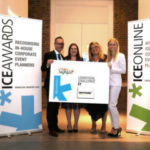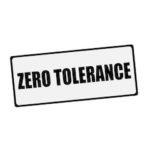
Just before the end of last year, we checked in with Stanie Soriano, officer-in-charge of MICE and business development for the Philippines’ Manila-based Tourism Promotions Board (TPB), to see how the country’s meetings infrastructure came through Haiyan — and the role it can play as part of the recovery process.
When did you learn about the typhoon? How did the Tourism Promotions Board respond?
We first heard of Typhoon Haiyan a weekbefore it made landfall in the early morning of Nov. 8, 2013. We were aware that it was a superstorm that would hit the central part of the Philippines, the Visayas region. It was a Friday and the skies were quite clear in metro Manila, so we all went to work as usual. At around noontime, however, there was an announcement that work was canceled for the rest of the day.
We immediately sent out an official Department of Tourism advisory to the local tourism industry and our foreign offices abroad, as well as all our contacts overseas. Furthermore, TPB responded by mobilizing a new marketing effort dubbed “Bangon Tours” — bangon being the Filipino word for “rise” — a social-tourism effort aimed at encouraging domestic travelers to visit major tourism destinations as a way to help in the rehabilitation and recovery of disaster-stricken areas. The project is in line with the government’s recovery and rebuilding efforts for the survivors of calamities through the promotion of domestic tourism. It is an invitation to the Filipino market to travel within the Philippines during the holiday period, visit our fun destinations, and participate in rebuilding efforts.
The project was initially participated in by some 20 members of the Philippine Travel Agencies Association (PTAA) and the Philippine Tour Operators Association (PhilTOA). We are hoping other tourist establishments, such as restaurants, shopping malls, and other retail outlets, as well as credit-card firms and banks, will also join the social-tourism effort.
Participating tourist establishments are initially offering special tour packages to 16 tourist destinations nationwide, and more destinations will be added. These establishments are being asked to share at least 5 percent of their net income from the tour packages/ room nights sold via Bangon Tours. The percentage share will be directly given to the company’s chosen nongovernment organization or charitable foundation involved with the disaster-affected communities.
How was the Philippines’ meetings infrastructure affected by the typhoon?
The typhoon spared the nation’s capital and top MICE destination, metro Manila, as well as the main island of Luzon. In Haiyan’s path was Cebu, a major provincial city and MICE destination, where the convention center sustained minor damage.
Other major tourist and MICE destinations in the area, such as Palawan, Boracay, and the Bicol region, sustained minimal damage, while Bohol was spared, leaving the island to continue to recover from the October earthquake. [Editor’s note: A magnitude 7.2 earthquake struck Bohol on Oct. 15; more than 200 people were killed.] The majority of the country’s MICE facilities and tourist areas, however, were not affected.
Was the Philippines hosting any major international meetings or conferences when the typhoon struck?
No major international meeting or conference was being held when the typhoon struck, and specifically not within the Visayas region. Most of the meetings/conferences being held at the time were in metro Manila.
What is the state of the Philippines’ meetings community today? How can the international meetings community help you?
The latest report of ICCA on worldwide country rankings showed that the Philippines jumped five notches higher, from number 54 in 2011 to number 49 in 2012. In ICCA’s city ranking, metro Manila leaped 25 places, from number 99 in 2011 to number 74, based on the higher number of international association meetings held in the country’s capital city in 2012.
We expect to see continued improvements in the Philippines’ world congress destination position/ ranking, especially since a number of important international events have already been booked in the country’s main congress and events destinations such as metro Manila, Cebu, Boracay, and Davao — which were either slightly or totally unaffected by the typhoon. Some of these major events are as follows: Asia Pacific Drive Tourism Conference & Exhibition, Jan. 30-Feb. 2, 2014, Subic Bay Exhibition & Convention Center; World Economic Forum, May 2014, Makati Shangri-La Hotel, Manila; and 23rd Asia Pacific Economic Cooperation (APEC) Summit, 2015.
The best way that the world can assist is by spreading the word that it’s business as usual in the Philippines and we are ready to welcome visitors and host MICE events.



